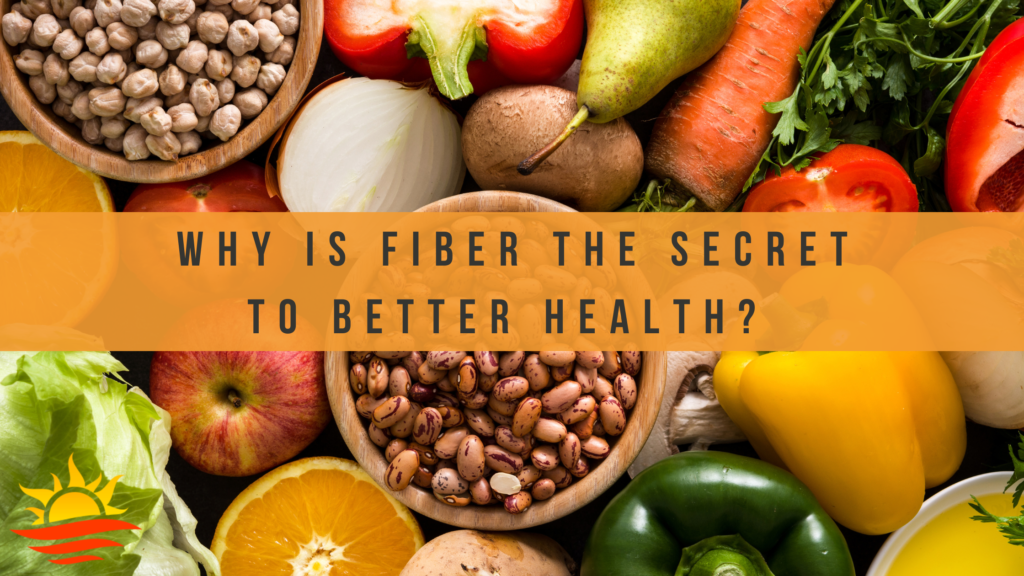What if I told you there is one macronutrient to reduce your risk of heart disease, stroke, hypertension, gastrointestinal disorders, obesity, type 2 diabetes, and certain cancers? And 95% of Americans do not consume enough of this macronutrient.
It’s fiber! I used to think of fiber as that yucky powder I had to dissolve in water and swallow, like Metamucil.
However, God made thousands of different plants for us as food containing all the fiber we need. All edible plants have some fiber. So why is fiber the secret to better health? It all boils down to the trillions of bacteria in our gut, which is known as the gut microbiome.
Types of fiber
There are two types of fiber: insoluble and soluble. Many plant foods contain both kinds.
Insoluble fiber
Insoluble fiber does not dissolve in water and is undigested roughage, adding bulk to the stool.
Sources of insoluble fiber include wheat bran, wheat germ, oat bran, beans and lentils, and whole grains. Many fruits and vegetables contain insoluble fiber, such as apples and pears with skin, potatoes, and leafy greens.
Soluble fiber
Soluble fiber dissolves in water to form a gel-like substance that slows down digestion and nutrient absorption. Instead of being digested, it is fermented in the stomach and small intestine.
Sources include beans and lentils, cruciferous vegetables such as broccoli and Brussels sprouts, avocados, sweet potatoes, turnips, figs, oats, chia seeds and flax seeds.
The secret to better health is fiber because the beneficial bacteria in our gut break down the indigestible, soluble fiber.
Benefits of soluble fiber
The good bacteria in our gut love soluble fiber! They break down undigested soluble fiber in the colon, and produce short-chain fatty acids (SCFAs) such as acetate and butyrate.
Then we absorb the SCFAs, enabling them to perform many important functions of the body, such as lowering cholesterol and LDL levels, stabilizing blood glucose, producing hormones, controlling the appetite, lowering inflammation, enhancing the immune system, and promoting a healthy gut.
Too little dietary fiber leads to an unhealthy gut microbiome, which is the source of many chronic diseases, so fiber is the secret to better health.
Eat more plants
The most common plants in the diet of most Americans are corn, soybeans, and wheat. However, it’s important to eat a variety of plant foods for better health because different gut bacteria feed on different types of soluble fiber.
In 2012, researchers at several universities began the American Gut Project. The aim of the project was to learn more about the number and types of bacteria in our bodies, and how our diet and lifestyle affect the composition of these microbes.
Researchers found that for the best health, the optimal amount of plants to eat is 30 different plants per week.
So, rather than concentrating on how much fiber to consume or which fruits, vegetables, and whole grains to add to our diets, think about increasing the diversity of plants we eat on a weekly basis and work towards the 30 plants per week.
Include minimally processed fruits, vegetables, herbs, whole grains, nuts, seeds, and mushrooms. (Minimal processing includes chopping, cooking, blending, fermenting, and some canned or frozen, as long as additional ingredients are not added to change the natural state.)
Final thoughts
If you are having gut issues, consult your physician before adding fiber to your diet. They may recommend a low FODMAP diet to heal your gut first. Then go slow and ease into increasing fiber intake. Concentrate on cooked and blended food sources first.
No need for any nasty tasting fiber supplements. Just eat more delicious plants made by God, not food made in a factory!



